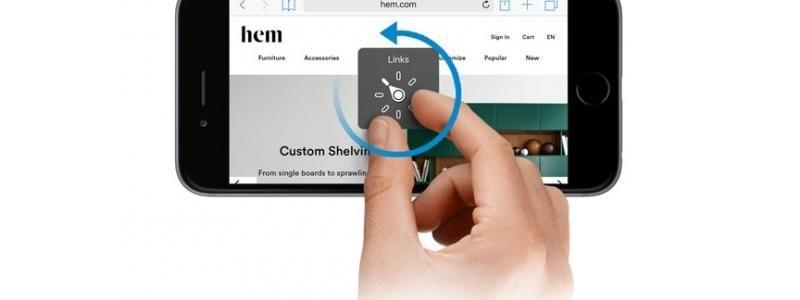Apple’s VoiceOver: Continuing To Empower Blind Mobile Users

Before, people who had trouble seeing properly had to spend considerable amounts of money in order to acquire technology that magnified the screens on their computers, provided spoken directions for navigational purposes, identified their paper bills, and detected the shade of their clothing. Today, however, those visually impaired can just arm themselves with the right set of smartphones or tablet devices, plus a few mobile apps and accessories, in order to empower themselves.
Usually, the mobile device they would be using is Apple’s iPhone. This is because the iOS mobile operating system that powers all iPhone devices come with VoiceOver, the screen scanning technology that has been included in Apple’s software since it debuted in 2009 with the release of the iPhone 3GS.
How exactly does VoiceOver work? For starters, the feature deactivates the single tap functionality on the display screen of the iPhone. By doing so, it allows visually impaired mobile users to move their fingers across the display screen and hear what is being shown. It could be anything from mobile apps to text messages to tweets to sentences on news articles. As soon as users activate the Speak Hints feature, VoiceOver will proceed to dictate what a particular mobile app is and then provide easy instructions on how to use it. Users even have the option of adjusting the voice’s speed and pitch level.
For sure, there are many technologies out there that make it easier for visually impaired mobile users, but so far, Apple’s VoiceOver has been the most consistently good in terms of quality, especially when used with other mobile apps made for those with limited eyesight. BlindSquare is a good example of how VoiceOver can really empower blind mobile users, talking to them as they walk along city streets or inside a shopping center. BlindSquare works so well because it accesses the built in GPS in iPhone devices, and then coordinates with FourSquare and a crowdsourced map of the world.
Of course, there are other mobile apps too that work really well with VoiceOver. There is the LookTel Money Reader for scanning currency, Voice Dream for reading out words from web pages, PDFs, PowerPoint presentations, and other files, Be My Eyes for facilitating video chats with sighted volunteers, and the KNFB Reader for retrieving text from images captured using the iPhone. Even well known mobile apps such as Twitter, Periscope, Uber, and Lyft now come with specific functionalities for visually impaired users.
Related Blog Articles
- FBI Hacks Into Terrorist’s iPhone Sans Apple’s Assistance
- The People’s Operator: The Wireless Carrier That Cares
- Introducing WALT: A Google Tool For Checking Responsiveness In Android and Chrome OS
- So, Was The Data Retrieved By The FBI From The Hacked iPhone Useful?
- Verizon Brings Exclusive Video Content To Go90 Via A Stake In AwesomenessTV
- Proposed Encryption Bill Would Force Tech Companies To Hand Over Data
- So How Is The Apple Watch Doing So Far?
- HTC 10 Smartphone To Be Offered By Verizon, T-Mobile and Sprint; But Not By AT&T
- Wells Fargo: T-Mobile Only Major Network To Register Postpaid Net Phone Gains In 1st Quarter
- Google, Facebook Test Separate Potentially Game-Changing Broadband Technologies


 Menu
Menu